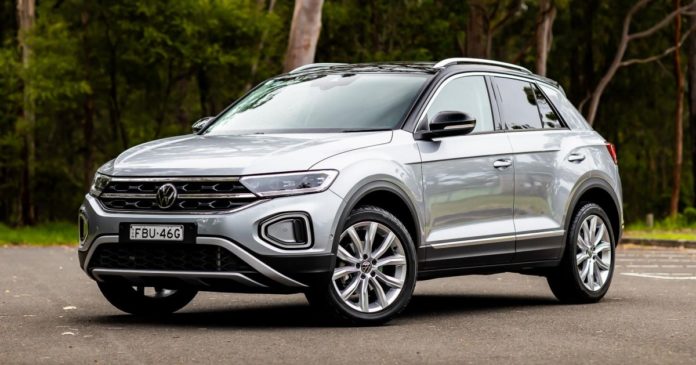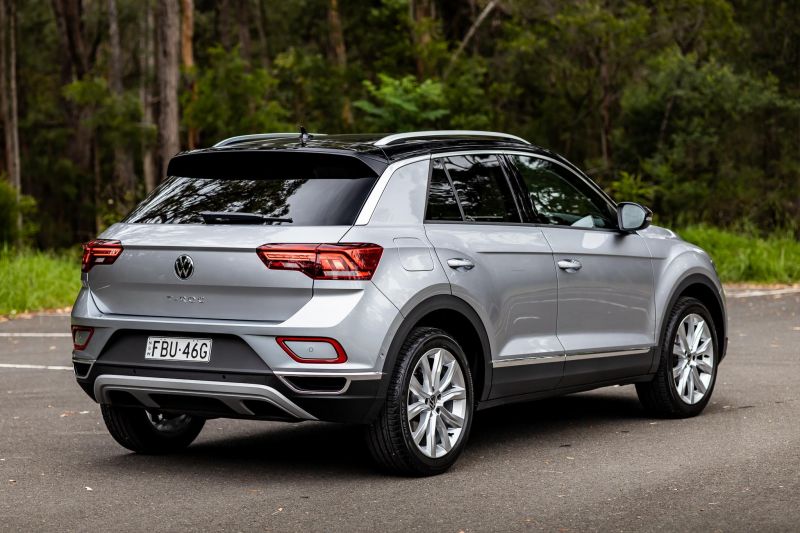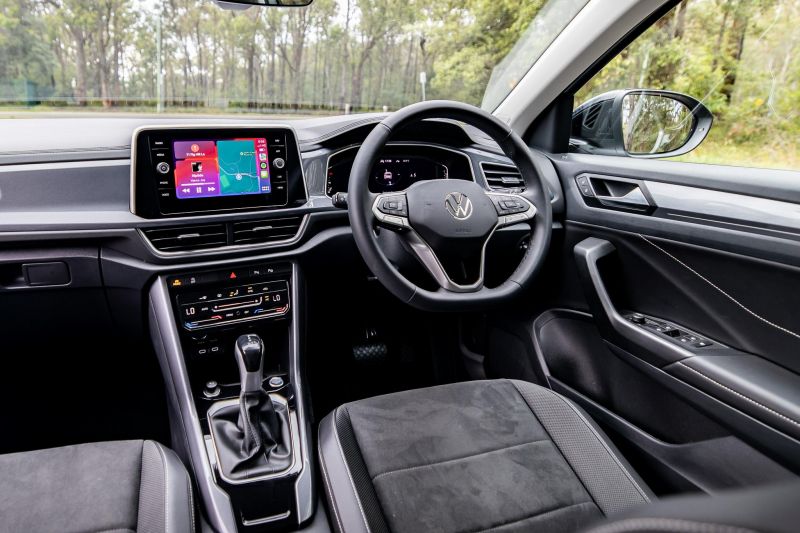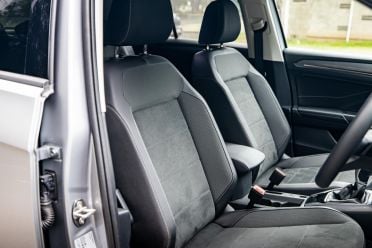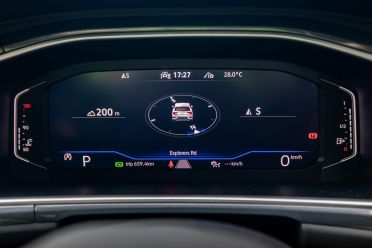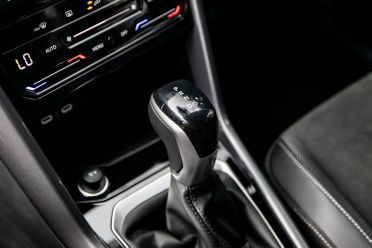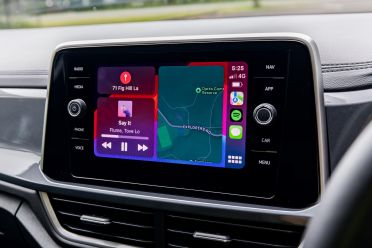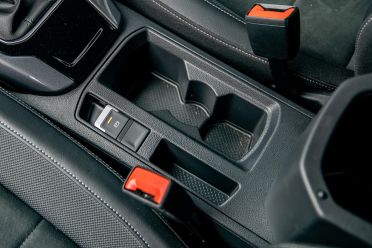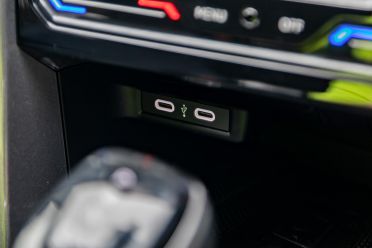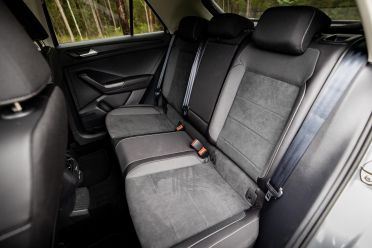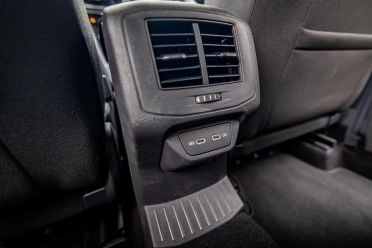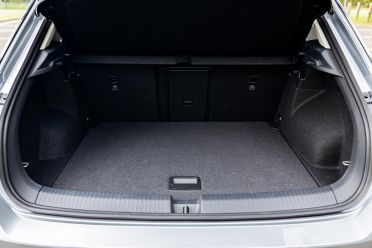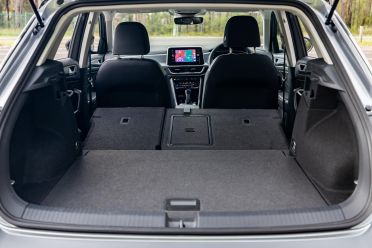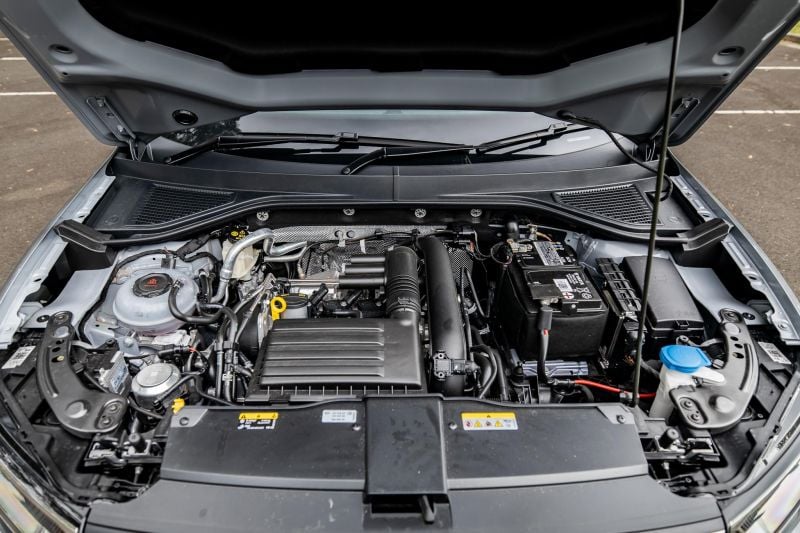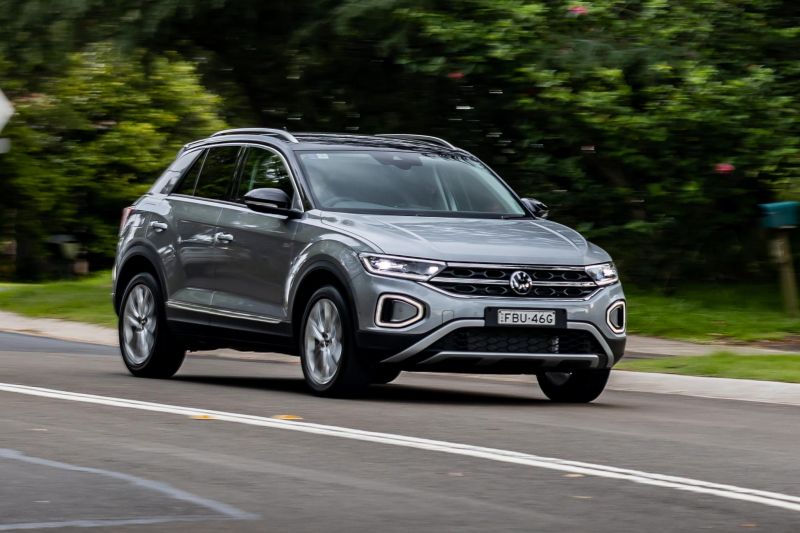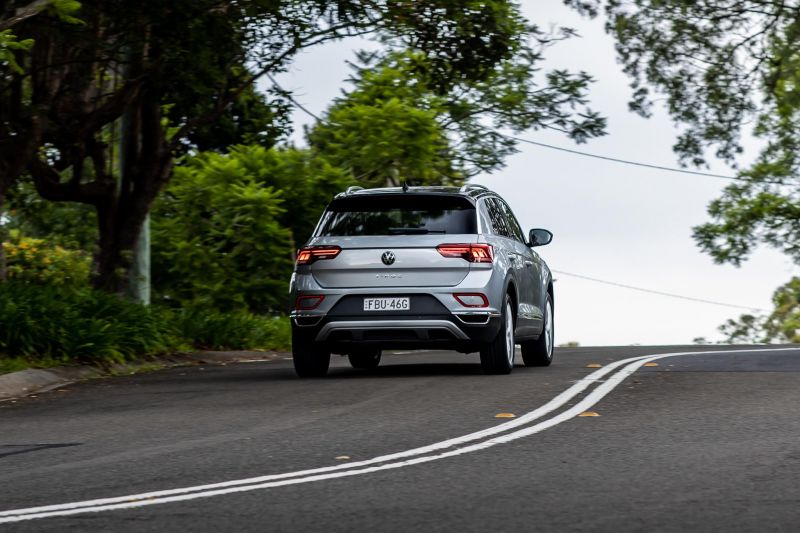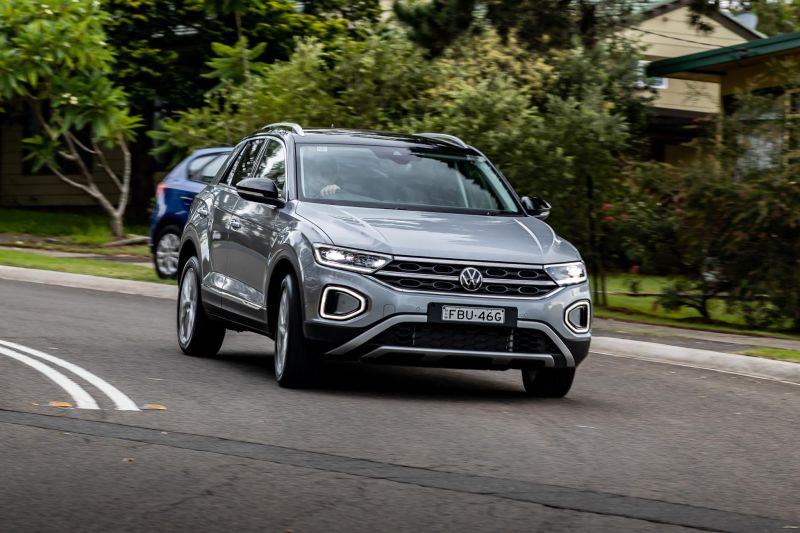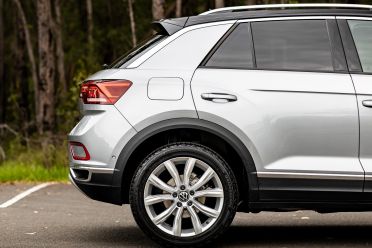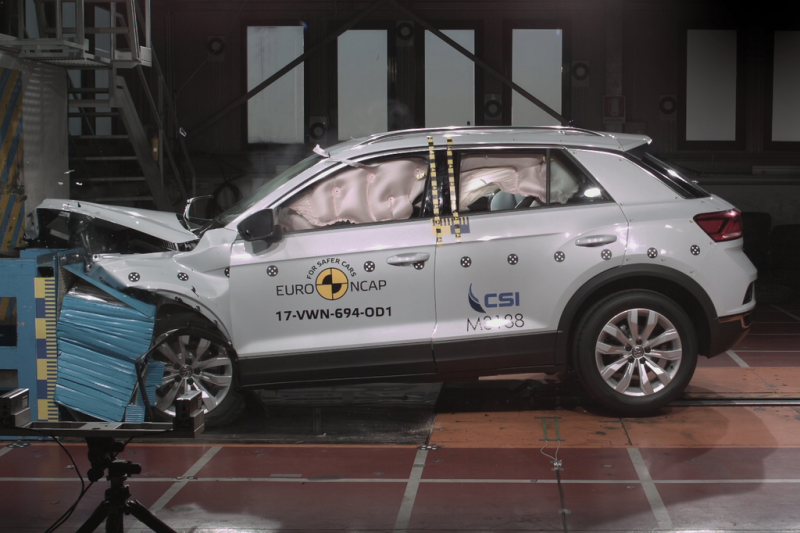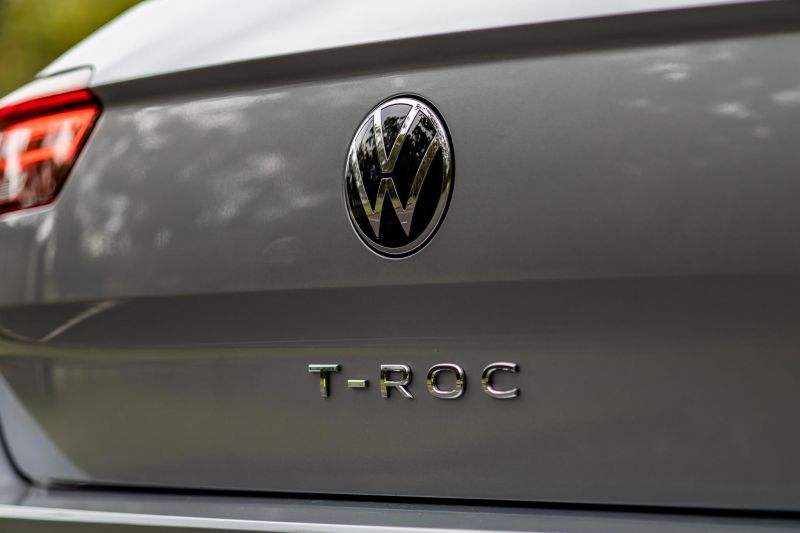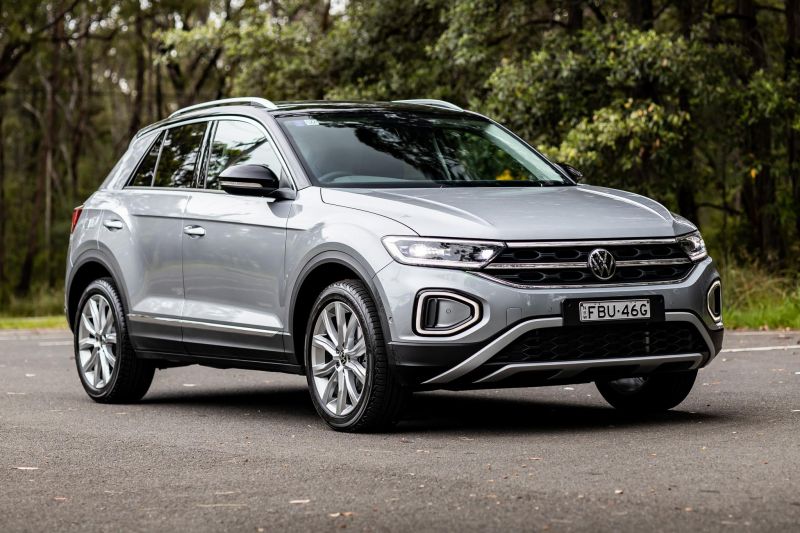The Volkswagen T-Roc is a superstar for the brand in Australia, having cemented its spot as the company’s best-selling model — and the Style grade tested here makes a pretty strong case as the pick for your hard-earned.
This one-up from base spec lists at less than $40,000 before on-roads, but you’re looking at $42,990 drive-away as part of a national promotion current until March 31, 2024.
So, should you take a look at the 2024 Volkswagen T-Roc Style? And does it bring enough to the table compared to the affordable CityLife grade that’s $5000 cheaper?
How does the Volkswagen T-Roc fare vs its competitors?
View a detailed breakdown of the Volkswagen T-Roc against similarly sized vehicles.
Volkswagen
T-Roc
How much does the Volkswagen T-Roc cost?
The T-Roc Style starts from $39,790 plus on-road costs, and is currently advertised for $42,990 drive-away.
2024 Volkswagen T-Roc pricing:
- 2024 Volkswagen T-Roc 110TSI CityLife: $36,890 ($37,990 D/A)
- 2024 Volkswagen T-Roc 110TSI Style: $39,790 ($42,990 D/A)
- 2024 Volkswagen T-Roc 140TSI R-Line: $47,990
- 2024 Volkswagen T-Roc R: $63,490
Prices exclude on-road costs
To see how the T-Roc lines up against its rivals, use our comparison tool.
What is the Volkswagen T-Roc like on the inside?
The thing about the T-Roc is that while it’s pretty close to a Golf in size, it still has the ‘old’ VW interior.
And you know what? That’s good.
That’s because you have more physical controls and an ‘older’ 8.0-inch touchscreen media system, which has intuitive touch panel elements down the sides of the screen, and you still get a tuning dial and a volume knob as well.
It’s a pretty simple screen, with easy to learn menus and controls. During my time in this car I had no issues with wireless Apple CarPlay connecting and reconnecting on multiple different occasions getting in and out of the car. The stereo could do with more bass, however, as it has six speakers but no subwoofer.
There’s a proper climate control panel down below, rather than haptic sliders on a screen, but it does have touch-sensitive style controls for temperature and the fan.
However, you can just simply tap to change them if you don’t want to muck around sliding your finger back-and-forth on that panel.
The nice leather-lined steering wheel has conventional buttons for volume, track, the digital driver info screen controls, and cruise control functions. Beyond the wheel is a digital instrument cluster with multiple different menus and displays available.
The buttons to control it take a little bit of acclimation, but it’s an otherwise conventional layout for the controls in this car… so long as you’re okay with the indicators being on the left stalk.
There’s a traditional gear selector – not the little lever thing seen in some other newer models from the VW Group – and while you don’t have a manual handbrake, there’s a trigger for the electronic park brake. So it does feel less like a science experiment than some of the other new small SUVs in the segment.
Storage is okay, including a wireless phone charger in front of the gear selector, which has 2x USB-C ports above it. Behind it is an open cup holder section, which is strangely shaped and won’t embrace all cups lovingly.
Behind that is a centre armrest console which isn’t especially large, and is only really going to be capable of taking a wallet and phones or, maybe, some treats for longer trips.
Peculiarly, while there are padded sections on the doors and padded elbow rests upfront, you do not get any lining in the oversized bottle holders in the doors as you do in many other VWs. At least here is a rubberised mat in the base to help prevent items sliding about.
There are ambient light strips in the front doors, and the materials and finishes are all pretty high end… up front at least.
Front seat comfort is very good, although, some people may be disappointed the seats lack electric adjustment and are unheated, which seems s a little bit rich for a car at this price point.
They do at least have different trim elements, and nice grey stitching, and the Alcantara-style fabric on the inner parts of the seats is nice and grippy.
Perhaps the biggest problem with seat comfort in the T-Roc is for anyone who finds themself in the back seat.
Behind a seat set for my own driving position (at 182 cm or 6’0” tall) my knees are hard up against the seat ahead, and while head room is good and ingress and egress isn’t difficult, it isn’t necessarily the most commodious place. It’s more suitable for two adults than three, and there is a transmission tunnel dividing the rear footwells.
There are some good amenities for those in the back seat. This includes map pockets on the back of both seats, decent sized door pockets for bottles – but without any lining in the bottom of the rear door pockets, directional vents, a pair of USB-C ports, and a fold down armrest with adjustable cup holders. It is strange, though, that the cupholders are better in the backseat than they are up front. Finally, the middle seat also has a ski-port for longer items to be stashed via the backseat.
There are slightly different trim elements in the back, including hard plastics on the doors and the door toppers, no ambient lighting, and different design elements, too. At least there are soft elbow pads.
Parents! It’s roomy enough for a toddler to sit behind an adult, and my 2 ½ year old daughter was in her forward-facing car seat for much of my time with the vehicle. There are ISOFIX points in the window seats and top-tether points as well.
Both the entry-level CityLife and Style models have 445 litres of boot space, which extends to 1290L when the rear seats are folded down. That’s better than their AWD counterparts, which cop a cut in capacity to 392L/1237L respectively.
The boot space has an adjustable floor section so you can make it larger if you need to, or have a flat load space from the lip forwards if that’s what you prefer.
There is a space-saver spare wheel below the floor, and in the luggage area there are a couple of tiedown points and shopping bag hooks as well. It’s going to be big enough for a pram and a couple of extra bags, or a weekend worth of suitcases for a small family.
One issue that presents itself when you’re loading the boot is that it is not electrically powered, and also there’s no dangly handle to pull the boot lid down. There are hidden handles with illustrations that are seemingly supposed to help, but they’re actually a bit confusing – even for IKEA instruction interpretation experts.
What’s under the bonnet?
Both the base model CityLife and the second-tier-up Style make use of VW’s tried and true 1.4-litre four-cylinder turbocharged petrol engine producing 110kW of power and 250Nm of torque. This engine has remained essentially unchanged for several years now.
Despite being a carryover the engine has class competitive outputs, and these grades are fitted with an eight-speed automatic transmission, with power going only to the front wheels.
It has a claimed 0-100km/h time of 8.7 seconds, but it has paddle shifters and a Sports mode for the transmission if you want to see how fast you can do the sprint.
Thinking of fitting a towbar? The towing capacity is 690kg for an unbraked trailer, and 1500kg for a braked trailer.
Fuel consumption for the Style and CityLife is stated at a combined 6.3 litres per 100km, with 95 RON premium unleaded fuel required. The fuel tank capacity is 50 litres.
Over my week of driving across a mix of different scenarios including daycare drop-off and collection, urban driving, freeway cruising and plenty more, I saw a displayed return of 7.6 litres per 100km. And for those playing along at home, I kept the engine start-stop active the entire time.
How does the Volkswagen T-Roc drive?
That engine and transmission behave themselves pretty well in most situations, but it’s not quite as snappy a drive experience as VW Group models with this 1.4 turbo equipped with a DSG dual-clutch auto.
That’s down to the fact that this automatic, while less complex, isn’t as decisive in a lot of situations. It can be busy on maintained ascents, shifting between a few different gears to maintain say, 80km/h.
I live in the Blue Mountains and there’s a section where – in a Golf with a seven-speed DSG – there were no perceptible shifts occurring. But this drivetrain makes a bit more fuss across that same stretch, with the box ‘hunting’ a bit more to try and maintain pace.
That might not be a deal breaker, and you can change it by adjusting the drive mode to Sport, or the transmission mode to Sport, or by using the paddle shifters yourself. In reality, it’s not a big deal – and if you’ve never driven a DSG-equipped car, then you’re probably wondering why I’m even rabbiting on about this.
In fact, in most other situations, it’s a pretty decent transmission. It deals better with traffic jams and traffic lights, with the engine stop-start system being less disruptive and the auto taking off in a zippy manner from a standing start.
The engine is a bit of a go-getter, too. It’s no T-Roc R in terms of outright performance, but you’re not going to feel shortchanged in any way if you’re considering this against other small SUVs that don’t have turbo engines – even a few that do.
It revs happily at low speeds and holds pace nicely on the freeway, and for commuters there’s also the handy, fatigue-reducing Travel Assist function that will do adaptive cruise control (stop-and-go) and lane-keeping steering in some situations, too.
One thing I should mention is that my partner drove this car a bit, and she found the throttle to be a bit hard to balance once you got to highway pace. She doesn’t use cruise control nearly as much as I do.
It also has the expected dynamics of a Volkswagen, meaning it essentially drives just like a Golf, but a bit higher up and with a bit more suspension travel over bumpy bits.
The ride is very good, even with a less sophisticated torsion beam rear suspension setup. The 18-inch wheels and slightly lower-profile tyres of the Style jolt a little more over sharp edges than the CityLife I drove recently, but the ride is better than acceptable in the majority of circumstances.
It also steers quite nicely, too. The Sport setting makes the weighting a bit heavy, and you can adjust the Individual mode to have heavy steering if you want it, but I found that it wasn’t as enjoyable in that mode when it came to urban driving and dealing with intersections and parking.
I had no major complaints about the drive experience here, but it is quite loud over coarse-chip road surfaces and, while I might never have found this out if the weather wasn’t monsoon-like during my week with this car, the fastest windscreen wiper speed is a bit too slow!
What do you get?
T-Roc CityLife highlights:
- LED headlights (reflector-type)
- Automatic headlights
- 17-inch alloy wheels
- 6-speaker sound system
- Keyless entry and start
- Digital Cockpit digital instrument cluster
- 8.0-inch touchscreen infotainment system
- Apple CarPlay, Android Auto (wired)
- DAB+ digital radio
- Wireless phone charger
- Dual-zone climate control
- Leather-wrapped steering wheel
- Paddle shifters
- Roof rails
- Cloth upholstery
- 2 x front and rear cup holders
- 2 x front and rear USB-C charging ports
T-Roc Style adds:
- Performance LED headlights (projector-type)
- 1025-inch Digital Cockpit Pro
- Wireless Apple CarPlay, Android Auto
- Satellite navigation
- Black exterior rear-view mirrors
- 18-inch Grange Hill alloy wheels
- Titanium Black-Anthracite upholstery
- Manual driver and passenger lumbar adjustment
- Rain-sensing wipers
Is the Volkswagen T-Roc safe?
The Volkswagen T-Roc has a five-star ANCAP safety rating, based on testing conducted in 2017 by Euro NCAP.
It received an adult occupant protection score of 96 per cent, a child occupant protection score of 87 per cent, a pedestrian protection score of 79 per cent, and a safety assist score of 71 per cent.
Standard safety features include:
- Autonomous emergency braking (forward, reverse)
- Lane-keep assist
- Front, rear parking sensors
- Reversing camera
- Lane departure warning
- Driver attention detection
- Collision warning
- Travel Assist
- Adaptive lane centring
- Adaptive cruise control
- Blind-spot monitoring
- Rear cross-traffic alert
The T-Roc is only fitted with six airbags – dual front, front side and full-length curtain – meaning it misses out on driver’s knee and front centre airbag protection.
How much does the Volkswagen T-Roc cost to run?
VW Australia has a five-year, unlimited kilometre warranty for its model line-up.
Buyers can also choose to pay for servicing every 12 months or 15,000km, or prepay for three years ($1515, saving $150 over pay-as-you-go), or five years for $2750, a saving of $458. The latter has been increased by $300 as part of MY24, while the former has jumped $65.
If you service your VW with VW, you get your roadside assistance topped up annually. Otherwise you just get one year of cover from new.
CarExpert’s Take on the Volkswagen T-Roc
It’s an impressive small SUV, with a confident drive experience and some likeable features.
It isn’t as roomy as some rival crossovers, but those others just can’t match its all-round niceness.
Click the images for the full gallery
BUY: Volkswagen T-Roc
MORE: Everything Volkswagen T-Roc

